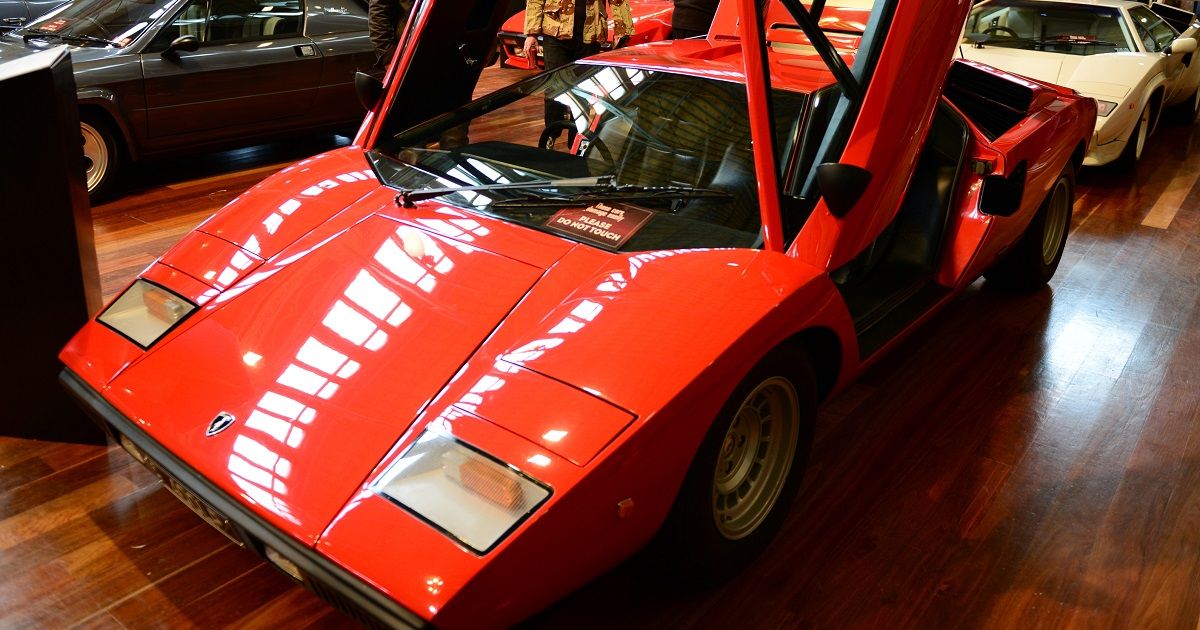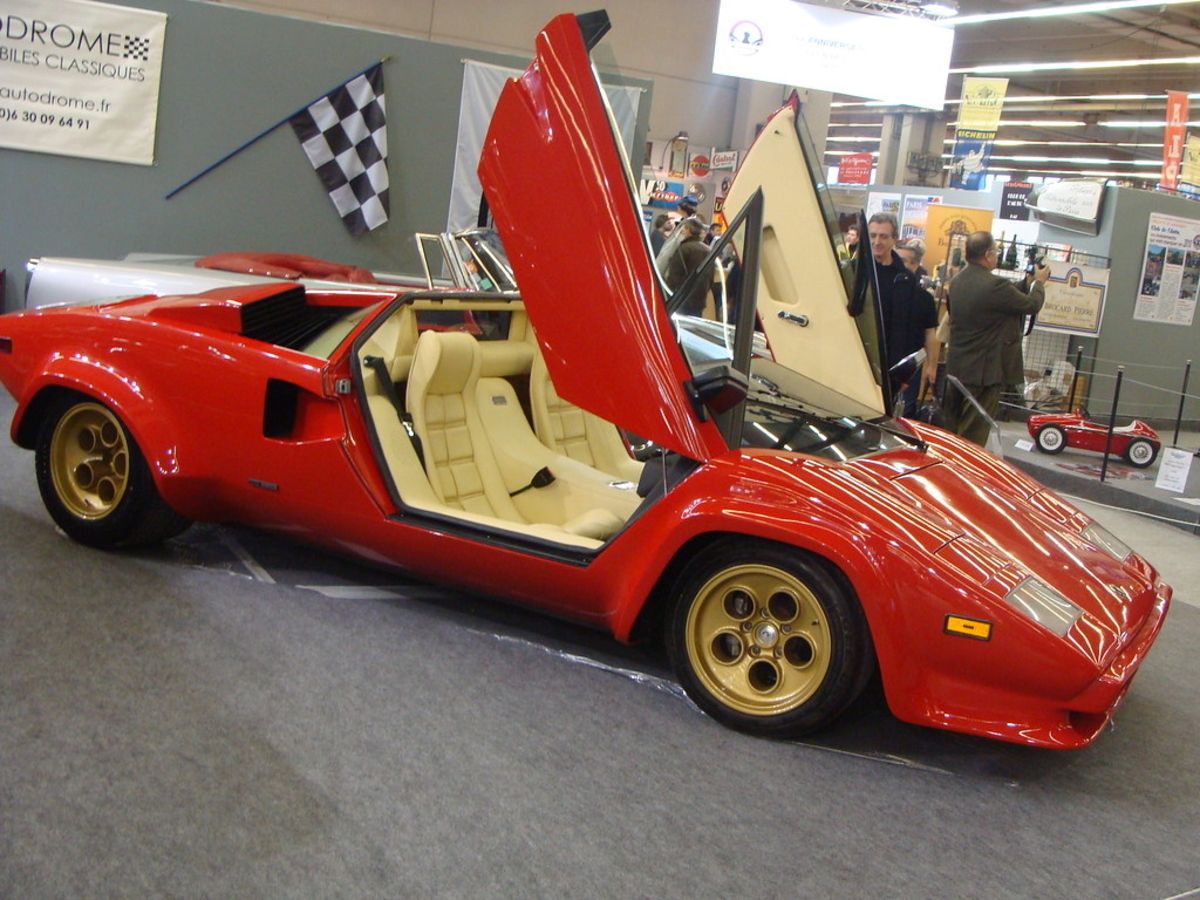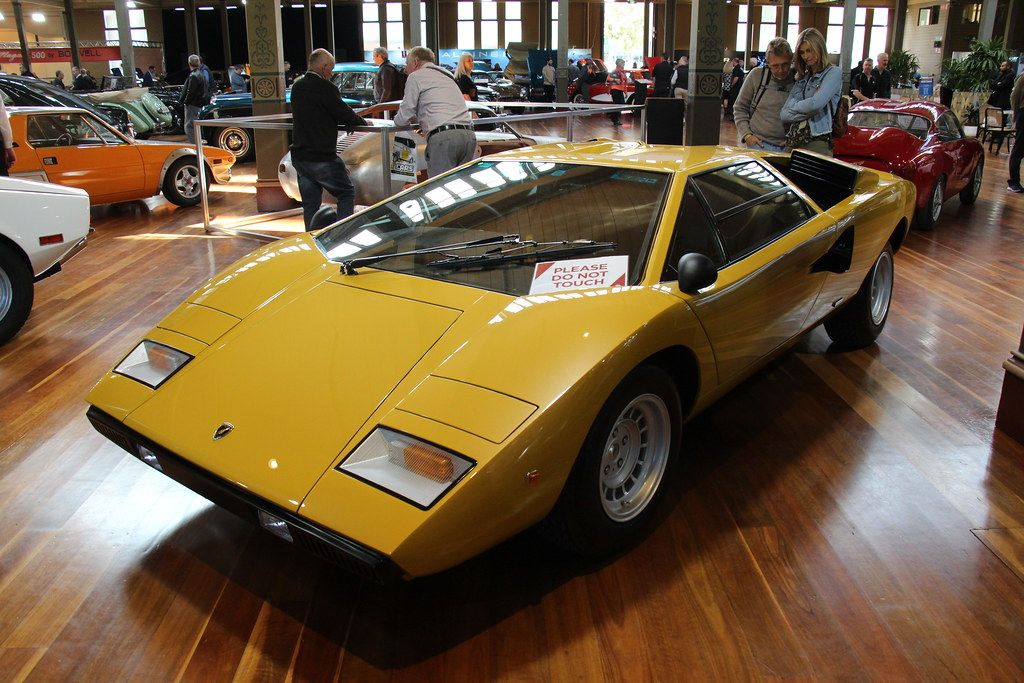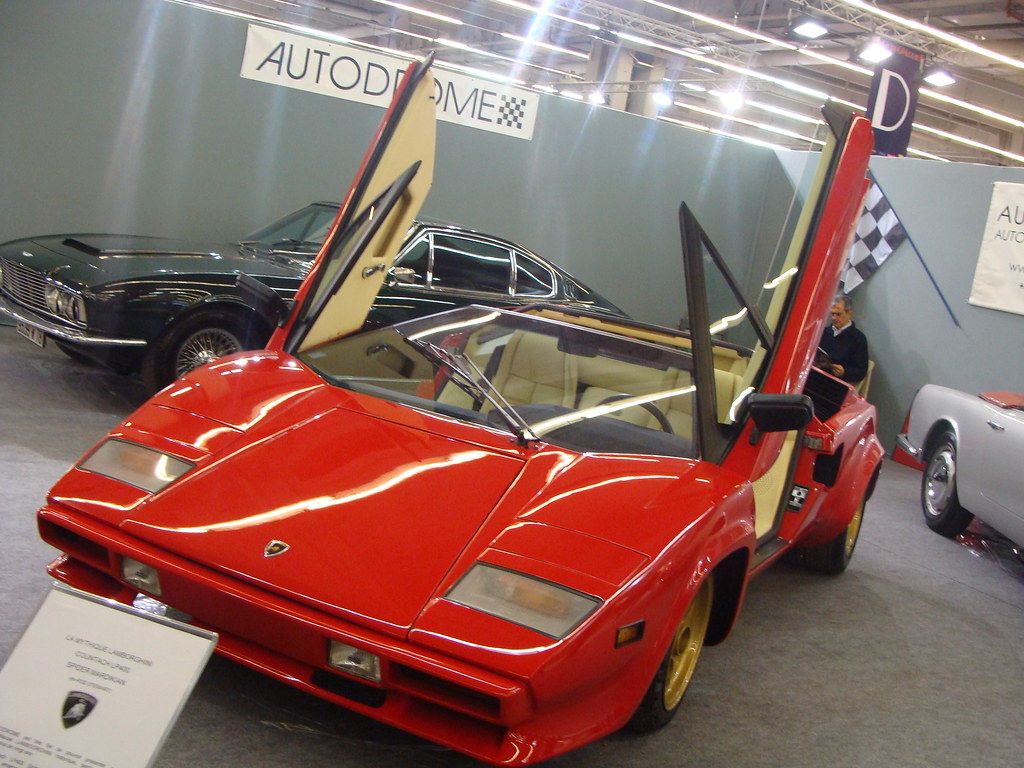Unveiled at the 1971 Geneva Motor Show, the LP400 was the first Lamborghini Countach availed to the public. Initially, the LP400 was in development for three years before hitting the road in 1974. It’s generally accepted that the LP400 altered the definition of a supercar when it debuted. And with its time-transcending beauty and exceptional performance, its price is set to keep rising.
Let’s have a closer look at the 1977 Lamborghini Countach.
What Was The 1977 Lamborghini Countach LP400 Like?
In 1965, barely a year after Lamborghini unveiled its first car, the Lamborghini 350GT, many car enthusiasts were surprised by the introduction of the Lamborghini Miura Chassis. When the vehicle was introduced the following year with a low, sleek, dramatic styling and a mid-mounted four-cam V-12 engine, it set a new record for an Italian supercar.
Many people saw a modern supercar with the Miura, but the fledging manufacturer was only getting started. The 1971 Motor Show saw the unveiling of a supercar that made the Miura appearance commonplace to many eyes.
The LP400 had a distinctive shape that resembled a flying wedge on wheels which Marcello Gandini and his team of experts at Lamborghini had transmuted into a running automobile. Gandini’s futuristic masterpiece went directly to production, right from sketches and prototyping.
The LP400’s angular components were pleasantly held together by a curvy sideline, emphasized with the pair of scissor doors that would subsequently become a primary symbol of Lamborghini.
The 1977 Lamborghini Countach LP400 Has A Top Speed of 180 MPH
It’s alleged the origin of the name was from a fan who, upon seeing it, yelled the name “Countach!”— a Piedmontese language expression which means a wolf-whistle. And at the onset of preparation of the five-liter prototype for production, the four-cam, four-liter V-12 engine still delivered 266 ft. lbs of torque and 375 horsepower to thrust the vehicle to a top speed of about 180 mph, making it feel just as fast as it appeared. With the Lamborghini Countach, Marcello Gandini created a new age of the supercar.
The Lamborghini Countach LP400 is regarded as the rarest, most expensive, and the most beautiful variant of the Lamborghini. Recently, one of these was sold in Paris with a price evaluation of $1.1m to $1.4m. In 2014, the Countach’s value jumped significantly from $200,000 to about $750,000.
According to Telegraph newspaper, the 1977 Lamborghini Countach LP400 is the best classic car investment of the previous years, after realizing a 669% increase in value since 2004.
The 1977 Lamborghini Countach LP400 Was an Inspiration for the LP500
The real benefit of a Countach results from its appearance. For a Porsche or a Ferrari, driving experience is vital; for a 1970s Lamborghini, it was all about the looks. And yes, the LP400 Concept looks amazing, except for a few extensions, such as its iconically outrageous fiberglass wheel arc extensions fitted. It is alleged that the 35R15/345 rear tires are the harshest tires ever used in car production.
However, 1982 saw the launch of the second facelift for Lamborghini — the LP500 S (also known as the 5000 S). This time the engine was upgraded to a 4.8-liter powerful version. The production figure for the LP500 (321) was slightly higher than its LP400 prototype, with a production figure of 237. And even with a significant amount of production, these vehicles are still scarce.
Besides rigging the LP500 with side-skirts-mounted scopes to resemble the Ferrari Testarossa, Lamborghini also announced major engine upgrades for its 1985 model. The V12 was stroked and bored to 5.2 liters with four halves per cylinder hence the Italian name quattrovalvole which resulted in the name LP5000 QV.
Carburetors were transferred from the sides to the top of the engine for improved cooling performance. The engine, therefore, had to be redesigned, leading to the addition of a large hump to house the newly constituted parts, reducing rear visibility from almost zero to absolutely none.
Quite a few items remained from the QV. Its bumper/spoiler was redesigned, now fitted with additional cooling vents for the front brakes and cooling streaks mounted on sills for rear brakes, just like in the late 1988 QV models. Scoops on rear wings were also reformed, now more integrated into the shoulder but quite operative enough to cool the engine, which also received a new hood.
To comply with the Federal Emission Regulations, US-bound vehicles were rigged with a Bosch K-Jetronic fuel injection system, whereas those sold in Europe utilized 6 Weber Carburetors instead. Those across the Atlantic yielded 449 bhp output while American models gave out 414bhp.
The Countach was in production for seventeen years, and it always remained on top of the supercar market. The Lamborghini Countach will always be remembered as the vehicle that steered the company to success and kept it alive.




